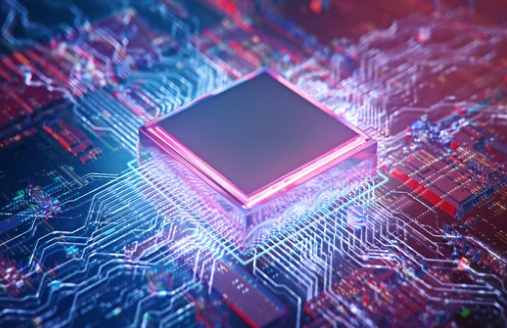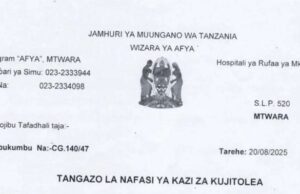The CPU (Central Processing Unit) is often described as the “brain of the computer.” But what does that really mean? How does this small chip inside your device take care of everything from opening your favorite apps to browsing the web and playing videos? In this easy-to-understand guide, we’ll break down how a CPU works—without all the complicated jargon.
Whether you’re a beginner, a student, or just curious about what powers your device, this explanation will help you grasp the magic behind modern computing.
What Is a CPU and Why Is It Important?
At its core, a CPU is a powerful calculator. It’s a chip responsible for processing instructions and carrying out tasks your computer needs to perform.
Every time you do something on your device—whether it’s clicking a button, typing a message, or opening an app—you’re sending instructions to the CPU. It’s the part of the computer that reads those instructions, figures out what they mean, and makes them happen.
The Basic Job of a CPU: Fetch, Decode, Execute
To understand how a CPU works, it helps to know its three main steps:
- Fetch: The CPU retrieves an instruction from your computer’s memory (RAM).
- Decode: It translates that instruction into a set of actions.
- Execute: It carries out those actions using its internal components.
This cycle is known as the “fetch-decode-execute” cycle, and it happens millions or even billions of times per second in modern processors.
What’s Inside a CPU? Key Parts Explained Simply
A CPU may look like a small square chip, but inside, it’s packed with microscopic transistors and specialized parts that each play a role. Here are the major parts:
- Control Unit (CU): Directs the flow of data and tells the CPU what to do with it.
- Arithmetic Logic Unit (ALU): Handles math and logical comparisons (e.g., add, subtract, greater than).
- Registers: Small bits of super-fast memory that temporarily hold data during processing.
- Cache: High-speed memory built right into the CPU to store frequently used data and reduce wait times.
Understanding CPU Cores: One Brain, Many Hands
Originally, CPUs had just one core, meaning they could process one task at a time. Now, most CPUs have multiple cores (like dual-core, quad-core, or even 16-core CPUs), which allow them to handle multiple tasks at once—also called multitasking.
Think of each core like a worker on a team. One worker (single-core) can do one task at a time. But with more workers (multi-core), you can divide the work and get more done faster.
Clock Speed: How Fast a CPU Works
CPU performance isn’t just about the number of cores. Clock speed, measured in gigahertz (GHz), tells you how many operations a CPU can perform per second.
- 1 GHz = 1 billion cycles per second
- A higher clock speed means faster processing, but it also creates more heat and uses more energy.
However, faster isn’t always better if your CPU gets too hot or uses power inefficiently. Modern CPUs balance speed and energy with clever design features like turbo boost or dynamic frequency scaling.
How the CPU Connects to Other Parts of the Computer
A CPU doesn’t work alone. It relies on other components to provide information and carry out tasks:
- RAM (Memory): Stores the data and instructions the CPU uses in real time.
- Storage (SSD or HDD): Holds your files and applications permanently until the CPU needs them.
- Motherboard: The main circuit board that connects the CPU to everything else.
- Power Supply: Provides electricity for the CPU and other parts.
- Cooling System: Keeps the CPU from overheating during heavy tasks.
All these components work together, but the CPU is the one making decisions and keeping everything running smoothly.
Real-Life Examples of What the CPU Does
Here’s how the CPU works in everyday situations:
- Opening an App: The CPU tells your system to find the app in storage, load it into RAM, and display it on the screen.
- Typing a Document: Each keypress sends a signal to the CPU, which updates the document in real time.
- Browsing the Web: The CPU interprets website code, renders graphics, and manages network activity.
- Playing Music: The CPU reads the file, sends it to your sound system, and lets you pause or skip at will.
Everything you see and do on a digital device passes through the CPU.
Smart Features: Modern CPUs Are More Than Just Fast
Today’s CPUs come with advanced features that make them smarter and more efficient:
- Hyper-Threading (Intel) / Simultaneous Multithreading (AMD): Allows one core to handle multiple tasks at the same time.
- Integrated Graphics: Some CPUs include a built-in graphics processor for light video or gaming use.
- Thermal Management: CPUs monitor their own temperature and slow down when needed to avoid overheating.
- AI Capabilities: Newer chips include features that support machine learning and faster decision-making.
These improvements help CPUs do more with less power—great for laptops, smartphones, and energy-conscious systems.
How the CPU Has Evolved Over Time
The first CPUs, like Intel’s 4004 in the 1970s, could only handle basic operations. Today’s CPUs are thousands of times more powerful, packed with billions of transistors and capable of running artificial intelligence and real-time 3D games.
Modern CPUs are also found in all kinds of devices—not just desktops and laptops, but also in:
- Smartphones
- Tablets
- Smart TVs
- Cars
- Smart home devices
If it’s smart, it probably has a CPU inside.
Conclusion: The CPU Is the Engine Behind Your Digital Life
Understanding how a CPU works helps you appreciate just how powerful and essential this tiny chip is. It takes billions of microscopic calculations and turns them into simple, smooth actions you experience every day—like opening an app, watching a video, or typing a message.
In simple terms, the CPU is the command center of your device. It follows instructions, makes decisions, and keeps everything running. And now that you know how it works, you’re one step closer to becoming tech-savvy in our digital world.















